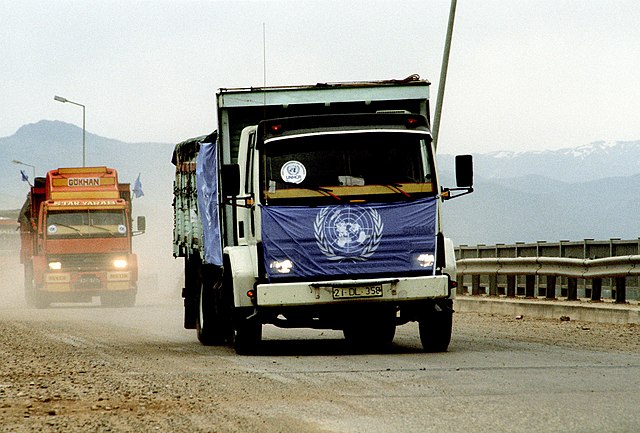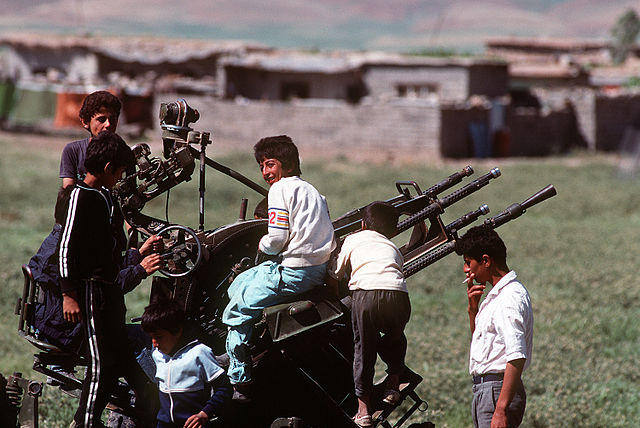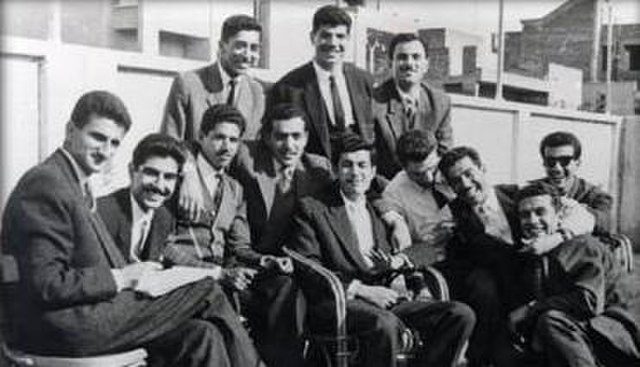The 1991 Iraqi uprisings were ethnic and religious uprisings against Saddam Hussein's regime in Iraq that were led by Shi'ites and Kurds. The uprisings lasted from March to April 1991 after a ceasefire following the end of the Gulf War. The mostly uncoordinated insurgency was fueled by the perception that Iraqi President Saddam Hussein had become vulnerable to regime change. This perception of weakness was largely the result of the outcome of the Iran–Iraq War and the Gulf War, both of which occurred within a single decade and devastated the population and economy of Iraq.
An Iraqi government tank disabled by rebels
U.S. Gulf War leaflet depicting Saddam Hussein as Death
UNHCR trucks with aid supplies for Kurdish refugees, 29 April 1991
Kurdish children in a refugee camp built during the U.S. and coalition Operation Provide Comfort play on a ZPU gun which was abandoned by Iraqi forces during Operation Desert Storm, 1 May 1991
Saddam Hussein Abd al-Majid al-Tikriti was an Iraqi politician and revolutionary who served as the fifth president of Iraq from 1979 to 2003. He also served as prime minister of Iraq from 1979 to 1991 and later from 1994 to 2003. He was a leading member of the revolutionary Arab Socialist Ba'ath Party and later the Baghdad-based Ba'ath Party and its regional organization, the Iraqi Ba'ath Party, which espoused Ba'athism, a mix of Arab nationalism and Arab socialism.
Saddam in his youth, late 1950s
Saddam Hussein and the Ba'ath Party student cell, Cairo, in the period 1959–1963
Saddam, back in Iraq, and other Ba'athists posing on top of a tank after the successful Ba'athist coup in February 1963
President of Iraq, Saddam Hussein, in military uniform








